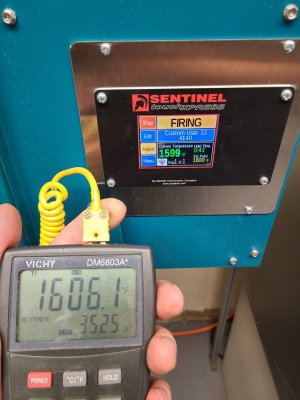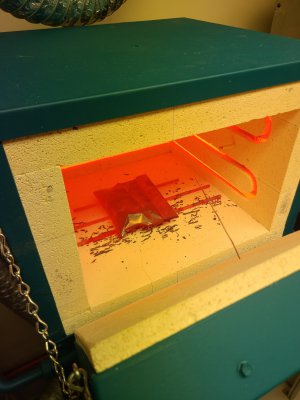Did you test with a magnet before quenching?
Did you temper them after quenching?
If it were me, I would take a sample of the stock and heat up a couple of inches to a bright red and test with a magnet. If non- magnetic, quickly quench in oil until cool to the touch. Then, without tempering, put the piece in a vise at the mid-point of the area that was heated. Smack it with a hammer. It should break or at least be very hard to bend.
Do the same thing with another sample but quench in water, not oil. Is it harder or more brittle?
If it still doesn't get hard, you probably don't have stock that can be hardened.
I have had stock that was hard, then I annealed it and machined it then attempted to re-harden it. It didn't work well. Turned out it was originally case hardened and was really not a very high carbon steel to begin with.
Try the same testing techniques with some other materials. Try an old drill bit for example. You should be able to get it to snap off without too much trouble.
Have you done a spark test comparison of your stock to a known hard metal? Sometimes that will tell you a lot, sometimes it is hard to tell. I have some old broken taps that I keep near the grinder, just for comparison.
Did you temper them after quenching?
If it were me, I would take a sample of the stock and heat up a couple of inches to a bright red and test with a magnet. If non- magnetic, quickly quench in oil until cool to the touch. Then, without tempering, put the piece in a vise at the mid-point of the area that was heated. Smack it with a hammer. It should break or at least be very hard to bend.
Do the same thing with another sample but quench in water, not oil. Is it harder or more brittle?
If it still doesn't get hard, you probably don't have stock that can be hardened.
I have had stock that was hard, then I annealed it and machined it then attempted to re-harden it. It didn't work well. Turned out it was originally case hardened and was really not a very high carbon steel to begin with.
Try the same testing techniques with some other materials. Try an old drill bit for example. You should be able to get it to snap off without too much trouble.
Have you done a spark test comparison of your stock to a known hard metal? Sometimes that will tell you a lot, sometimes it is hard to tell. I have some old broken taps that I keep near the grinder, just for comparison.



